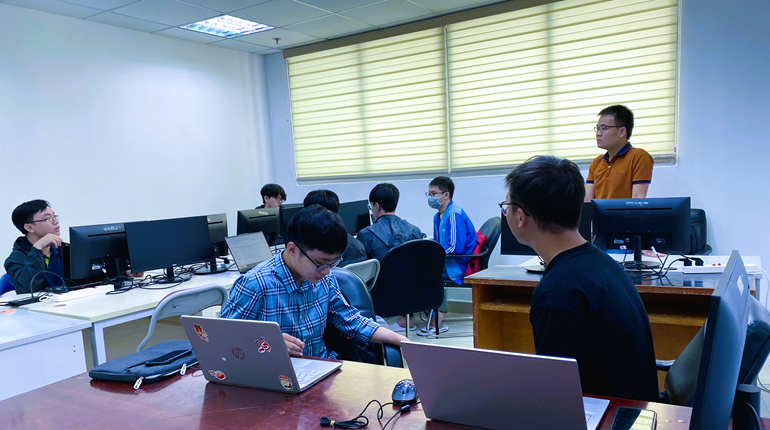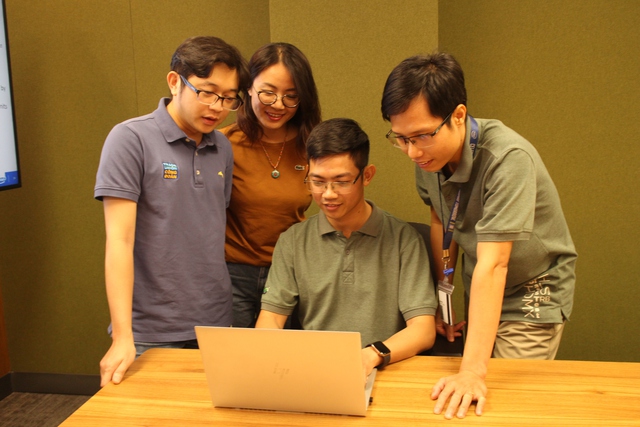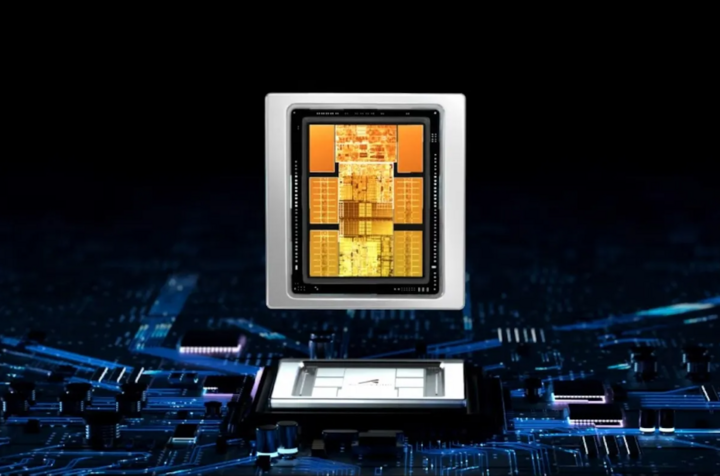Digital Combinational Logic Part-IV
Thursday, 13 January 2022 13:30
Semicon Editor 01
 Encoders
An encoder is a combinational circuit that performs the inverse operation of a decoder. If a device output code has fewer bits than the input code has, the device is usually called an encoder. e.g. 2n-to-n, priority encoders.
Last Updated ( Tuesday, 29 March 2022 00:11 )
Read more...
Digital Combinational Logic Part-III
Thursday, 13 January 2022 13:20
Semicon Editor 01
 Decoders
A decoder is a multiple-input, multiple-output logic circuit that converts coded inputs into coded outputs, where the input and output codes are different; e.g. n-to-2n, BCD decoders
Last Updated ( Tuesday, 29 March 2022 00:10 )
Read more...
Digital Logic Families Part-II
Wednesday, 12 January 2022 15:58
Semicon Editor 01
 Noise Margin Gate circuits are constructed to sustain variations in input and output voltage levels. Variations are usually the result of several different factors.
Last Updated ( Monday, 16 May 2022 15:12 )
Read more...
Digital Logic Families part I
Wednesday, 12 January 2022 15:41
Semicon Editor 01
 Digital Logic Families
Logic families can be classified broadly according to the technologies they are built with. In earlier days we had vast number of these technologies, as you can see in the list below.
Last Updated ( Monday, 16 May 2022 15:12 )
Read more...
Simplification Of Boolean Function Part-IV
Saturday, 08 January 2022 20:36
Semicon Editor 01
 QUINE-McCLUSKEY MINIMIZATION Quine-McCluskey minimization method uses the same theorem to produce the solution as the K-map method, namely X(Y+Y')=X Minimization Technique
Last Updated ( Sunday, 19 June 2022 13:30 )
Read more...
Simplification Of Boolean Functions Part-III
Saturday, 08 January 2022 20:31
Semicon Editor 01
 4-Variable K-Map There are 16 cells in a 4-variable (W, X, Y, Z); K-map as shown in the figure below.
Last Updated ( Tuesday, 29 March 2022 00:13 )
Read more...
Simplification Of Boolean Functions Part-II
Saturday, 08 January 2022 13:33
Semicon Editor 01
 2-Variable K-Map In any K-Map, each square represents a minterm. Adjacent squares always differ by just one literal (So that the unifying theorem may apply: X + X' = 1).
Last Updated ( Tuesday, 29 March 2022 00:13 )
Read more...
Simplification Of Boolean Functions Part-I
Tuesday, 04 January 2022 21:38
Semicon Editor 01
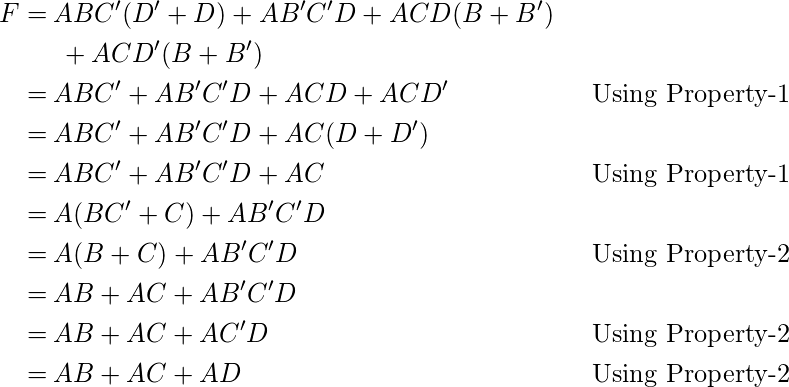 Introduction
Simplification of Boolean functions is mainly used to reduce the gate count of a design. Less number of gates means less power consumption, sometimes the circuit works faster and also when number of gates is reduced, cost also comes down.
Last Updated ( Tuesday, 29 March 2022 00:13 )
Read more...
Combinational Arithmetic Circuits Part-IV
Tuesday, 04 January 2022 20:39
Semicon Editor 01
 Multipliers
Multiplication is achieved by adding a list of shifted multiplicands according to the digits of the multiplier. An n-bit X n-bit multiplier can be realized in combinational circuitry by using an array of n-1 n-bit adders where each adder is shifted by one position.
Last Updated ( Sunday, 19 June 2022 13:30 )
Read more...
Combinational Arithmetic Circuits Part-III
Sunday, 02 January 2022 20:14
Semicon Editor 01
 Subtracter
Subtracter circuits take two binary numbers as input and subtract one binary number input from the other binary number input. Similar to adders, it gives out two outputs, difference and borrow (carry-in the case of Adder).
Last Updated ( Sunday, 19 June 2022 13:29 )
Read more...
Combinational Arithmetic Circuits Part-II
Sunday, 02 January 2022 20:02
Semicon Editor 01
 n-bit Carry Ripple Adder
An n-bit adder used to add two n-bit binary numbers can be built by connecting n full adders in series. Each full adder represents a bit position j (from 0 to n-1).
Last Updated ( Sunday, 19 June 2022 13:19 )
Read more...
Combinational Arithmetic Circuits Part-I
Sunday, 02 January 2022 19:02
Semicon Editor 01
 Introduction Introduction Arithmetic circuits are the ones which perform arithmetic operations like addition, subtraction, multiplication, division, parity calculation. Most of the time, designing these circuits is the same as designing muxers, encoders and decoders.
Last Updated ( Sunday, 19 June 2022 12:52 )
Read more...
Digital Number System Part-V
Sunday, 26 December 2021 21:58
Semicon Editor 01
 Floating Point Numbers
A real number or floating point number is a number which has both an integer and a fractional part. Examples for real real decimal numbers are 123.45, 0.1234, -0.12345, etc. Examples for real binary numbers are 1100.1100, 0.1001, -1.001, etc. In general, floating point numbers are expressed in exponential notation.
Last Updated ( Tuesday, 29 March 2022 00:17 )
Read more...
Digital Number System Part-IV
Sunday, 26 December 2021 21:49
Semicon Editor 01
 Error Detecting and Correction Codes
For reliable transmission and storage of digital data, error detection and correction is required. Below are a few examples of codes which permit error detection and error correction after detection.
Last Updated ( Tuesday, 29 March 2022 00:16 )
Read more...
Digital Number System Part-III
Sunday, 26 December 2021 21:41
Semicon Editor 01
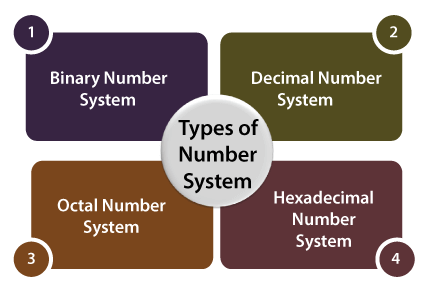 Binary Codes
Binary codes are codes which are represented in binary system with modification from the original ones. Below we will be seeing the following:
Last Updated ( Tuesday, 29 March 2022 00:16 )
Read more...
|
|



















